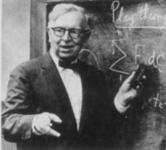Overview of Q Methodology
Basic Concepts
Q methodology makes use of factor analysis to study the structure of relationships among variables. Unlike standard uses of factor analysis (often called R Methodology), the variables are individuals not traits.
Q Methodology thus looks for similarities of subjective assessments in a population — attitudes, opinions, preferences. As William Stephenson, primary inventor of the method, put it: “What is involved is the discovery of hypotheses and reaching understandings, instead of testing hypotheses by way of predictability and falsifiability.”
The Q technique test procedure involves presenting participants with a set of items that the represent the full range across the topic of interest and asking the participants to rank the statements according to a provided instruction. The ranking proceeds in two stages: a rough grouping, according to the positive, negative, and neutral points on a scale, following by finer-grained distribution of the items on the scale. Instructions usually do two things: they provide participants with a situation or context (as you are now, or as you want to be ideally, for example) and a description of the ranking scale (most to least like you are now, or most to least like how you would be ideally).
Collected subject responses (the Q Sorts) are then analyzed via some complex arithmetic algorithms that detect factors that help the investigator detect and interpret what patterns the sorts hold. Usually a Q study includes additional post-sort interview questions that help with the interpretation.
Traditionally, Q technique has required in-person one-on-one interviews between researcher and participant. For some Q applications, this works well if the aim of the study benefits from “talk out loud” interactions during the study. But for many if not most Q studies, such interviews are logistically difficult and expensive — and limit the use of the technique.
In addition, the analytic steps have to date remained difficult because the available tools do not integrate data collection with analysis. The “gold standard” tool, PQMethod, is a clunky, command-line desktop application into which all data must be manually entered. Standard statistical packages do not readily perform steps required by Q.
It is these procedural difficulties in Q Methodology that Q-Assessor solves — along with providing investigators a number of additional tools to simplify and automate Q studies.
Historical Origins and Current Applications
Q-Methodology developed in the 1930s primarily through the work of William Stephenson — a 20th century British academic with PhDs in physics and psychology — while he was on the faculty of University College, London, and Oxford University. Eventually Stephenson moved to the U.S., joined the faculties of the University of Chicago, the University of Missouri School of Journalism (which remains a Q hot-spot today), and University of Iowa. |
Q-Methodology today finds widespread use in academic and commercial fields by researchers, corporate marketing departments, public relations firms, and many other entities who measure opinions and attitudes.
Q-Assessor was created on the belief that Q-Methodology’s reach could become vastly greater once its logistical problems were successfully solved — which Q-Assessor has managed to do.
Resources
There are quite a few online resources that describe more about Q-Methodology. Here is a short list as a starting point:
- Steven R. Brown’s book Political Subjectivity — the primary in-depth reference work, available for free download
- Q-Methodology at Wikipedia — brief summary
- Operant Subjectivity — the official journal of the International Society for the Scientific Study of Subjectivity (ISSSS)
- Peter Schmolck’s Q-Methodology site — nice compilation of links, references, the “PQMethod” Windows application, and its FORTRAN source code
- Q Methodology.ORG — a compendium of news, links, and the gateway to the ISSS and the Q listserv
- Q Method listserv — the primary discussion area for Q
Created: August 04, 2010 16:37
Last updated: June 18, 2017 17:37

Comments
No comments yet.
To comment, you must log in first.